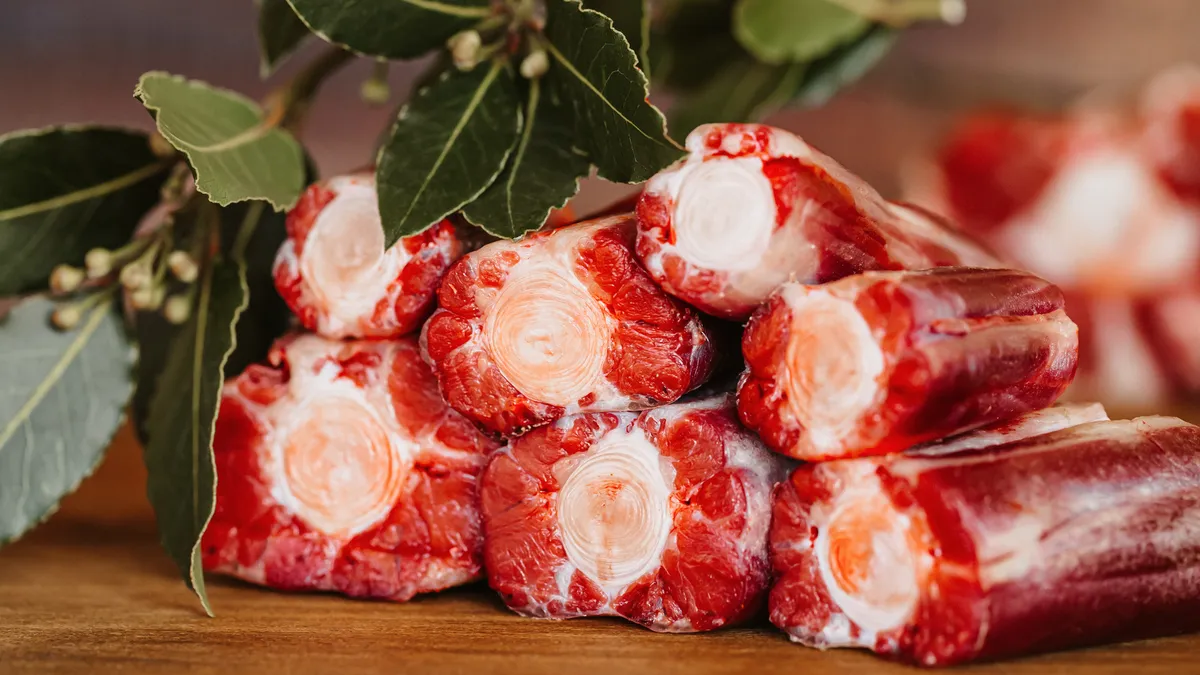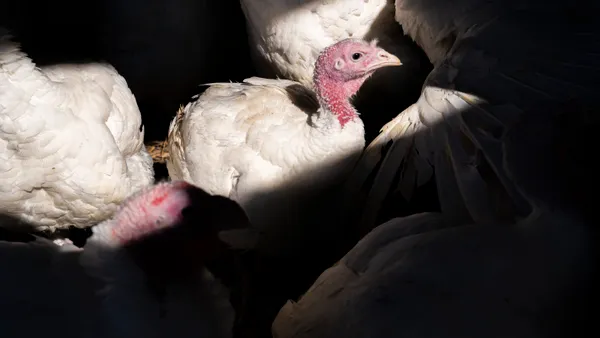At Datz Deli in Manhattan, the owner of the popular restaurant has been busy buying a particular cut of beef that has soared in popularity in the past year.
“Our Oxtail DatMat Mac patty is selling like crazy, at least 600 of them every day,” owner Joshua Dat said in an interview with Agriculture Dive. “And our oxtail gravy is moving fast since everyone seems to love its richness, and the bones give that gravy so much flavor.”
Datz’s signature dish features shredded oxtail meat and macaroni and cheese stuffed into a Caribbean-style beef patty. Dat said the restaurant can barely keep up with demand.
Oxtail is having its lobster moment. Restaurants across the U.S. are adding the now-trendy beef cut to their menus. But oxtail has been popular with Black Americans for generations.
Oxtail, replete with tough connective tissue, was long regarded as an undesirable part of the cow, and was often given to enslaved Black Americans. They, in turn, leveraged their creativity to convert this cast-off piece of meat into a rich, delicious dish.
Enslaved culinary specialists used ingredients, such as potlikker (the flavorful broth left behind from boiling beans and greens) to braise oxtail until the delicate meat fell to delicious pieces. After slavery ended, their descendants kept eating oxtail dishes.
In other parts of the world, people have clamored for this bony part of the cow.
In Europe, oxtail soup has been a common dish since the Middle Ages, lauded for its hearty flavor and supposed medicinal properties. In African and Caribbean cuisines, oxtail stews and braises are cherished comfort foods, often served with rice or root vegetables.
“Whole-animal cooking was what food was about for centuries, and people didn’t waste,” said Adrian Miller, culinary historian and author of “Soul Food: The Surprising Story of an American Cuisine, One Plate at a Time,” in 2023. “A hallmark of soul food and African heritage food in the Americas has been the use of these cast-off parts: ham hocks, ox tails, pig ears and all these extremities because the culture was about using all parts of the animal.”
Today, though, restaurant patrons are lining up to get a taste of the beef cut on pizza slices, cheesesteak subs, pasta dishes, and stuffed into patties.
But the beef cut’s rising popularity comes with a corollary effect: Its price has nearly tripled in recent years. The average wholesale price for oxtail in July was $14.19 per pound, compared with $5.99 per pound in April 2015, the first year it was reported, according to the U.S. Department of Agriculture.
“I understand why the price is going up because so many chefs are using it now,” Dat said, “and look at what it is exactly: a tail of a cow, which the animal only has one of, compared to other parts of its body that are more numerous.”
In fact, one cow yields only about six to eight pounds of the fat-coated tail, which is typically butchered into thick slices.
For many who work with the meat, the surge of popularity for oxtail doesn’t come as too much of a surprise. It was only a matter of time before the wider American food scene caught up to Black Americans and other regions, such as Jamaica and Guyana where oxtail is as common as coconut bread.
“Slow-cooked oxtail is deeply rooted in tradition in many cultures,” said Dagan Lynn, executive chef at the National Cattlemen’s Beef Association. “As cuisine inspiration continues to expand globally. People are looking for that authentic comfort food experience. The rich, meaty flavor that comes from the careful preparation of oxtail is sought after and delicious.”
“The rising costs of beef bring these ‘off cuts’ more in focus,” Lynn said. “Consumers will get their beef fix in and are more willing to try new cuts. They are also looking to their local rancher to purchase whole sides or quarters of beef. “
A Google Trends analysis found that searches for oxtail were low at a popularity score of 6 in September 2004 and surged to 73 in June 2024.
With an increase in demand comes price hikes that cattle ranchers are happy to enjoy. They are finally seeing the fruits of their labor, considering the intensive process of bringing oxtail to the dining room table: Each cow yields up to eight pounds of meat, bones and collagen; its output is paltry compared with, say, brisket, which typically yields 29 pounds per cow.










